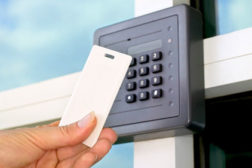Access Control & Identification
Digital Shuffle: March 2014
The top apps and websites in the security industry.
March 18, 2014
Insider News & Business: March 2014
The latest news in the security industry.
March 18, 2014
Considering Visitors First With Your Visitor Management System
If security were a puzzle, visitor management would be a traditional “last” piece — but that is starting to change.
March 18, 2014
Why Wireless Locks Are Becoming So Popular in Access Control
Wireless access control has opened the eyes of users to the idea that they can secure many things besides just doors.
March 18, 2014
Be in the forefront of security intelligence when you receive SDM.
Join over 10,000+ professionals when you subscribe today.
SIGN UP TODAY!Copyright ©2024. All Rights Reserved BNP Media.
Design, CMS, Hosting & Web Development :: ePublishing








